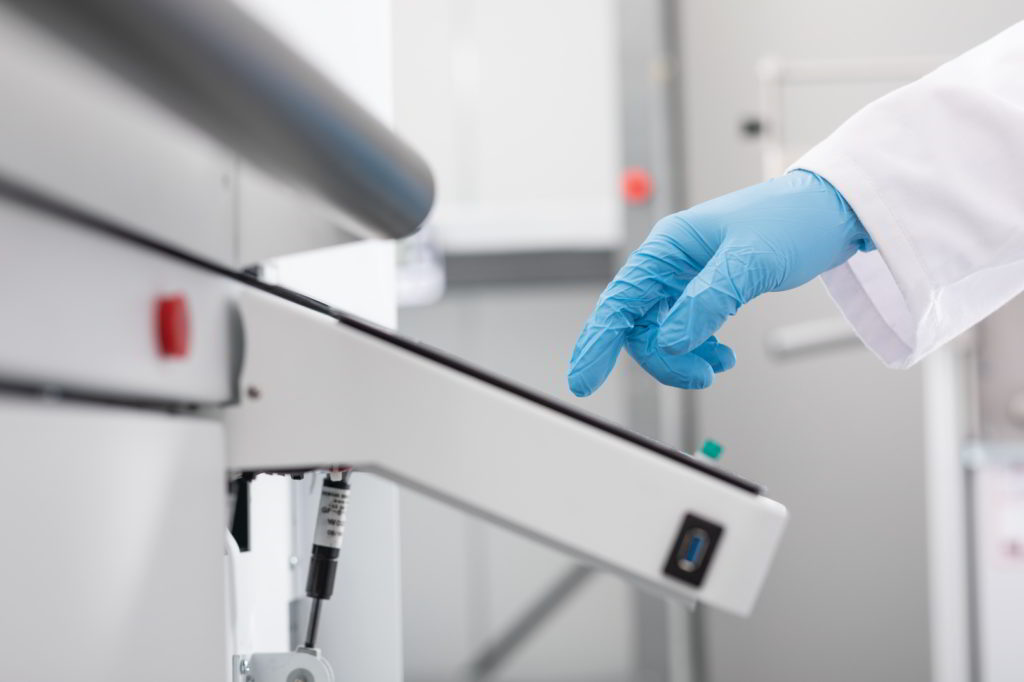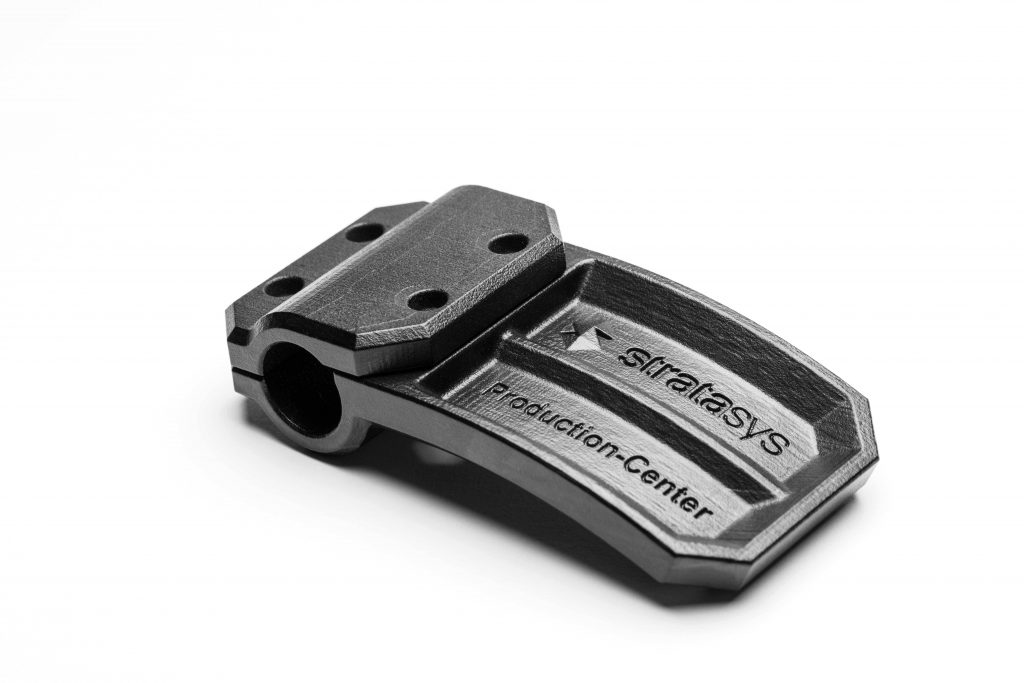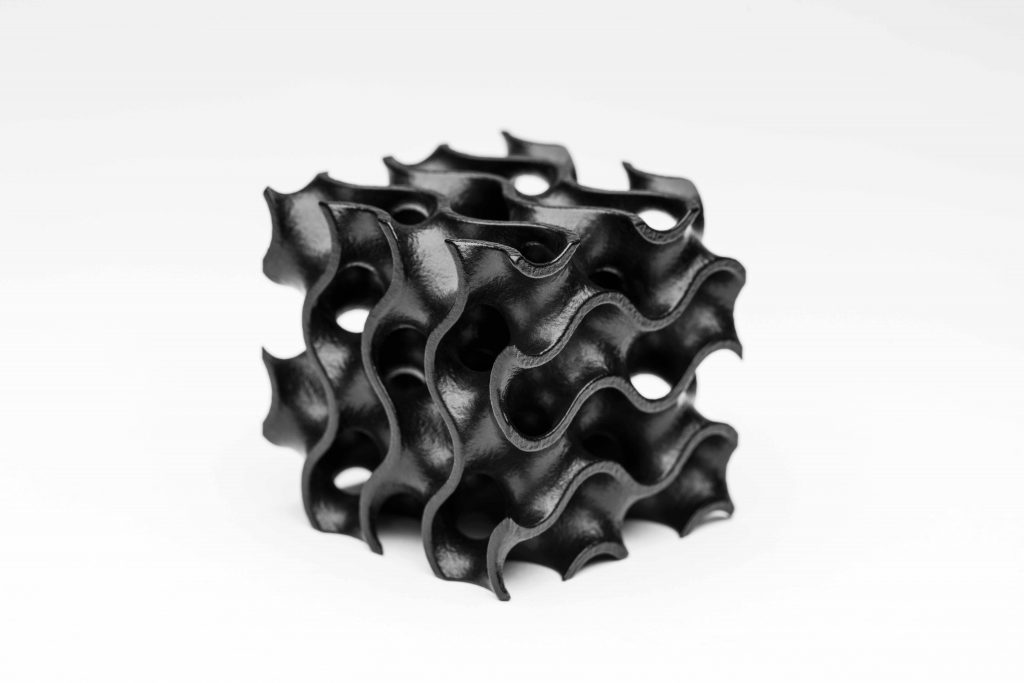Leading 3D printer manufacturer Stratasys has announced the launch of its new powder-based 3D printing technology.
The technique is based on a High Speed Sintering process originally developed by Xaar, a supplier of inkjet printheads. Named Selective Absorption Fusion (SAF), the technology will power the company’s upcoming H Series Production Platform. According to Stratasys, the process is designed for tooling applications and high-volume end-use part production, meaning it is characterized by its high throughput capabilities and exceptional part qualities.
Omer Krieger, Executive VP of product strategy and corporate development at Stratasys, states, “3D printing is increasingly transforming production in industries around the world as companies seek to move with more agility and efficiency, which is why we have put production parts at the heart of our business strategy.”

How does SAF 3D printing work?
With over a decade of research and development behind it, SAF 3D printing involves selectively jetting an infrared-sensitive High Absorbing Fluid (HAF), a binder, onto a bed of polymer powder. This is done by passing industrial piezoelectric print heads over the full width of the build area, and it is compatible with a variety of polymer powders such as polyamides and elastomers.
The system then passes an infrared lamp over the entire span of the powder bed, which melts the HAF-infused areas and fuses the powder particles together to form solid layers. Since SAF performs these steps in the same direction across the powder bed, all of the parts in a build experience the same thermal energy, resulting in consistent part qualities regardless of bed placement. The thermal properties of the IR lamp are also closely controlled so as to avoid warping issues, which can be a problem with polymers in high-temperature environments.
Finally, SAF also makes use of what Stratasys calls a Big Wave powder management system, a proprietary technology that ensures optimal and even powder distribution across the bed. The Big Wave system features a counter-rotating roller to rapidly recirculate any powder that may have overflowed, minimizing the material’s premature exposure to thermal energy and reducing powder aging. As a result, every build requires less fresh powder and operational costs are lowered.

$25 billion by 2025
Stratasys estimates that manufacturing applications show the most potential for market growth within the additive manufacturing sector, reaching $25 billion by the year 2025. Market research firm CONTEXT also estimates that polymer powder-based 3D printer revenues will see a compounded growth of 21% per annum from 2020 to 2024. WIth the launch of the upcoming H Series, the company is positioning itself to serve both tooling and end-use component manufacturers in a plethora of industries.
Krieger explains, “SAF technology represents a significant innovation that opens up new opportunities to address applications in industries such as automotive, consumer goods and electronics, and industrial equipment. As a result, we will enable a shift of many applications from traditional manufacturing and also enable the creation of products that can only be produced additively.”
The H Series Production Platform, Stratasys’ first set of SAF-based 3D printers, will be commercially available come Q3 2021.

The Stratasys 3D printer portfolio
Stratasys certainly doesn’t disappoint when it comes to the sheer number of 3D printer launches. Earlier this month, the company launched its latest multi-material PolyJet 3D printer specifically for dental applications. The J5 DentaJet can deposit up to five different biocompatible resins at once, including a support material.
Just last month, the company also launched the J850 Pro 3D printer, a multi-material PolyJet system for engineering-grade prototyping applications. The latest entry in the flagship J8 Series is primarily aimed at engineers and designers seeking monochrome functional prototypes at an affordable price. Furthermore, Stratasys recently dipped its toes in industrial resin-based 3D printing with the acquisition of SLA 3D printer manufacturers Origin and RPS.
Subscribe to the 3D Printing Industry newsletter for the latest news in additive manufacturing. You can also stay connected by following us on Twitter and liking us on Facebook.
Looking for a career in additive manufacturing? Visit 3D Printing Jobs for a selection of roles in the industry.
Featured image shows the upcoming H Series Production Platform. Photo via Stratasys.



